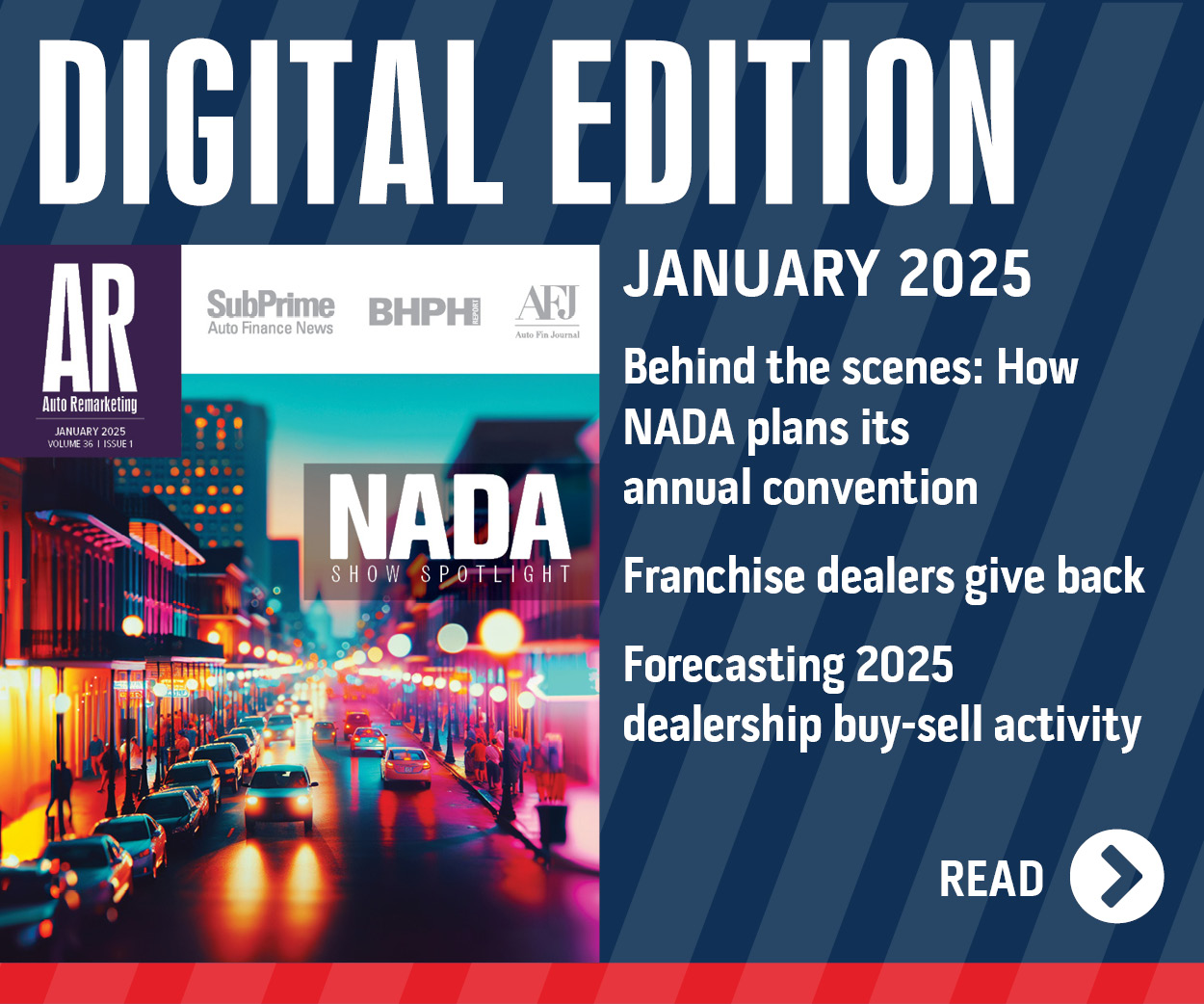CNW Projects Possible $8B in Lease Losses Based on Current Contracts

Automakers are writing lease deals at origination levels rarely seen nowadays, but CNW Research’s analysis of current contracts prompted the firm to insist a severe financial storm front could be coming.
CNW indicated that automakers’ drive to increase leasing share is putting them on a track to lose from $5 billion to $8 billion within three years.
“Leasing deals are increasingly important to new-car shoppers, and automakers are more than willing to put a customer into a short-term lease,” CNW president Art Spinella said in this month’s edition of the firm’s Retail Automotive Summary.
“But the competitive nature of such lease deals is causing many automakers to overvalue future residual values by 5 to 10 percent in order to get monthly payments lower,” Spinella continued.
CNW acknowledged there are some excellent reasons for automakers to offer leases.
What Spinella considered to be the more important factor, he pointed out lessees are more loyal to a brand than those who finance or pay cash for a new vehicle.
“By effectively forcing a customer to return to the selling dealership at the end of term (EOT), the chances of reselling (or re-leasing) the same brand more than double,” Spinella said. “That, in turn, reduces marketing expenses and virtually guarantees at least some production volume even if the economy turns sour.”
Next, Spinella highlighted the pool of potential customers often expands since lease payments are significantly less or the term significantly shorter for a lease versus traditional financing.
And what might be most important for dealers — especially for stores greatly interested and entrenched in the certified pre-owned market — Spinella called it a “virtual guarantee” that vehicle that can be certified will return at the EOT.
“CPO cars are a hot commodity and both the dealer and manufacturer can profit from this used-car option,” Spinella said.
In fact, CNW discovered about a quarter of all new-car intenders say a lease deal was the primary reason for entering the new-car marketplace.
“Conversely, while still dominant, there has been a decline in the percentage of shoppers who say that a big discount was the primary motivator for getting into the new-car market,” Spinella said.
CNW’s report suggested there are some industry leaders who have been bragging that the amount spent on incentives has diminished. But the reality is, the share of vehicles carrying incentives has dramatically risen since 2007, according to the firm.
Today, CNW insists that more than 95 percent of all vehicles sold are delivered under some form of incentive. That’s up from 60 percent just prior to the recession and even tops the 2002 through 2004 period of what Spinella described as “virtually unleashed incentives.”
Looking at all incentives including the leasing residual value and money factor support, Spinella calculated incentive spending has increased 17 percent versus a year ago.
Undervaluing Residuals
Spinella explained there are effectively two popular ways to decrease a lease payment used by automakers:
—Lower money factors (interest)
—Higher residual values
“And herein lies the rub,” Spinella said. “While some overestimation of residual values can be justified because of the repeat business, lower marketing costs and other factors, if overdone it generates unacceptably high losses when off-lease vehicles are sold either through auction or to the leasing dealer.
CNW estimated that a 7-percent to 10-percent residual overestimation can be justified, but anything larger will become a financial burden on the automaker, its captive finance company or other institution.
The firm’s report showed the industry’s lease contracts have been overestimating residual values by roughly 14 percent this year with major increases in September and October of 15 and 18 percent, respectively.
Putting that into perspective, Spinella noted that a vehicle with a $35,000 lease value carrying a 50-percent residual value should be worth $17,500 at EOT. Upping the residual to 55 percent results in a hoped for EOT value of $19,250.
“That $1,750 difference turns into a $5.25 billion overestimation if the industry leases 3 million vehicle, which is likely this year,” Spinella said.
“But that’s not the end of it,” he added.
CNW found that residual values have already been subsidized by at least 3 percentage points bringing the $35,000 vehicle to $16,450 at the end of three years.
“That’s what the lessor can get for the vehicle,” Spinella said. “Translation? With a 55-percent EOT residual and 3 million vehicles leased, the industry is facing a tab in excess of $8 billion.”
With such a high figure in the realm of possibilities according to CNW, Spinella attempted to offer more clarity.
“Leasing has its place in the new-car arena, and the advantages are many,” he said. “But the auto industry had to shell out more than $10 billion in 2000 through 2002 because of overestimating residual values and 0.0001 money factors.
“A repeat could be a devastating blow to a fragile auto industry comeback,” Spinella added.
Used-Vehicle Leasing Increases
Apparently rising lease originations isn’t just happening on the new-model said.
In September, CNW determined nearly 107,000 used vehicles were leased rather than financed or bought for cash. That figure represents a 4.5 percent increase over year ago, marking the largest year-over-year gain of 2013 and the best unit volume level since June 2009.
“The typical used-car lease is in the near-luxury and luxury segments including high-end SUVs with the cap cost steadily in the $40,000 to $41,000 range this year,” Spinella said.
Continue the conversation with Auto Remarketing on both LinkedIn and Twitter.

 View The Latest Edition
View The Latest Edition

